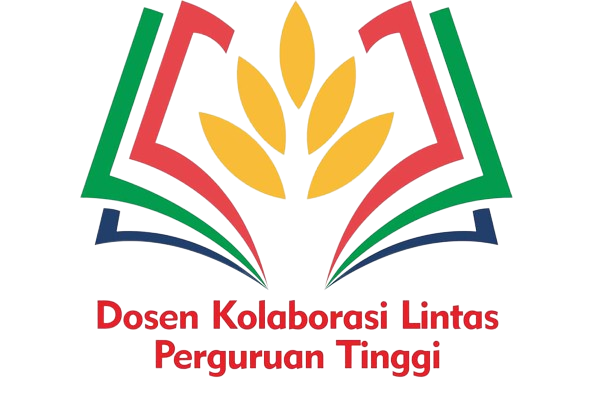Use of Technology to Prevent Illegal Fishing: A Case Study Perspective in the Natuna Sea
DOI:
https://doi.org/10.69812/ijsps.v1i1.45Keywords:
Vessel Monitoring, Fishing Business, Protection, DevelopmentAbstract
The use of technology in preventing illegal fishing (IUU) is critical in addressing the ongoing challenges in Indonesia's Natuna Sea, a region vulnerable to violations like illegal fishing, unauthorized vessels, and unlicensed resource exploration. The primary objective of this research is to explore the role of technology in enhancing the monitoring and enforcement of fishing regulations. Various technological tools, such as Vessel Monitoring Systems (VMS), Humanless Underwater Sensor Technology (HUST), remote sensing, and Automatic Identification Systems (AIS), are employed to improve surveillance capabilities. These technologies help track fishing vessels, detect suspicious activities, and gather evidence for legal enforcement. A qualitative descriptive research approach is used to analyze the effectiveness of these technologies and their integration into Indonesia's fisheries management system. Data is collected from secondary sources, including legal documents and research studies. The results show that VMS, AIS, and remote sensing have significantly improved the monitoring of fishing activities in the Natuna Sea. However, challenges such as limited data coverage, vulnerability to manipulation, and inter-agency coordination remain. The study concludes that while technology has proven effective in combating illegal fishing, further efforts are needed to enhance its implementation, including strengthening legal frameworks, political support, and inter-agency collaboration to ensure sustainable fisheries management in the region.
Downloads
References
Aggarwal, A. (2007). Impact of Special Economic Zones on Employment, Poverty and Human Development (194).
Darwis, D., & Putra, B. A. (2022). Construing Indonesia’s maritime diplomatic strategies against Vietnam’s illegal, unreported, and unregulated fishing in the North Natuna Sea. Asian Affairs: An American Review, 49(4), 172–192. https://doi.org/10.1080/00927678.2022.2089524
Digarse, P. W., & Patil, S. L. (2017). Arduino UNO and GSM based wireless health monitoring system for patients. 2017 International Conference on Intelligent Computing and Control Systems (ICICCS), 2017, 583–588. https://doi.org/10.1109/ICCONS.2017.8250529
Farole, T., & Akinci, G. (2011). Special Economic Zones : Progress, Emerging Challenges and Future Directions. In Directionsin Developmen Trade. The World Bank.
Fauzi, A., Huseini, M., & Rahayu, A. Y. S. (2022). Designing Strategies to Improve the Competitiveness of Special Economic Zones. Technium Social Sciences Journal, 31(1), 22–43. https://heinonline.org/HOL/Page?handle=hein.journals/techssj31&id=22&div=&collection=
Frick, S. A., Rodríguez-Pose, A., & Wong, M. D. (2019). Toward Economically Dynamic Special Economic Zones in Emerging Countries. Economic Geography, 95(1), 30–64. https://doi.org/10.1080/00130095.2018.1467732
Godenau, D., & López-Sala, A. (2016). Multi-layered Migration Deterrence and Technology in Spanish Maritime Border Management. Journal of Borderlands Studies, 31(2), 151–169. https://doi.org/10.1080/08865655.2016.1174602
Hidayat, S., & Negara, S. D. (2020). Special economic zones and the need for proper governance. Contemporary Southeast Asia, 42(2), 252–275.
Jalilian, M., Sariri, H., Parandin, F., Karkhanehchi, M. M., Hookari, M., Jirdehi, M. A., & Hemmati, R. (2016). Design and implementation of the monitoring and control systems for distribution transformer by using GSM network. International Journal of Electrical Power & Energy Systems, 74, 36–41. https://doi.org/10.1016/J.IJEPES.2015.07.022
Johnston, M. P. (2014). Secondary Data Analysis: A Method of which the Time Has Come. Qualitative and Quantitative Methods in Libraries, 3(3), 619–626. http://www.qqml-journal.net/index.php/qqml/article/view/169
Karnova, R. (2017). Kebijakan Joko Widodo Dalam Menangani Illegal Fishing di Wilayah Kelautan Indonesia [Universitas Andalas]. http://scholar.unand.ac.id/28908/
Kauti, M. K., & Ueda, G. (2016). Spatial approach to (zonal differentiation) of livelihood change and resource use in agro-silvo-fishery settlements around lake Victoria, Western Kenya. http://repository.seku.ac.ke/handle/123456789/2601
Lammertink, M., Nijman, V., & Setiorini, U. (2003). Population size, Red List status and conservation of the Natuna leaf monkey Presbytis natunae endemic to the island of Bunguran, Indonesia. Oryx, 37(4), 472–479. https://doi.org/10.1017/S003060530300084X
Liu, Y., Liu, Y., Xu, H., & Teo, K. L. (2018). Forest fire monitoring, detection and decision making systems by wireless sensor network. Proceedings of the 30th Chinese Control and Decision Conference, CCDC 2018, 5482–5486. https://doi.org/10.1109/CCDC.2018.8408086
Mahmood, S. N., Ishak, A. J., & Hussain, S. T. (2019). GSM based gas leak monitoring system. Periodicals of Engineering and Natural Sciences (PEN), 7(2), 670–678. https://doi.org/10.21533/PEN.V7I2.529
Miles, M., Huberman, M., & Saldana, J. (2014). Qualitative data analysis. SAGE Publications.
Moberg, L. (2015). The political economy of special economic zones. Journal of Institutional Economics, 11(1), 167–190.
Sivaramaganesh, M., Ramya, M., Gowtham, V., Bharathi, T., Jeevitha, G., & Scholar, P. G. (2014). Implementation of Maritime Border Alert System. Journal of Science and Innovative Engineering & Technology Communication & Electronics Engineering, 2(3), 23–31.
Tang, K. (2023). The political economy of special economic zones: the cases of Ethiopia and Vietnam. Review of International Political Economy, 30(5), 1957–1983. https://doi.org/10.1080/09692290.2022.2152073
Wang, J. (2013). The economic impact of Special Economic Zones: Evidence from Chinese municipalities. Journal of Development Economics, 101(1), 133–147. https://doi.org/10.1016/J.JDEVECO.2012.10.009
Whitaker, C. D. (1987). Vehicle movement monitoring system. United States.
Downloads
Published
How to Cite
Issue
Section
License
Copyright (c) 2024 Geby Gita, Wan Jesica Febrianty

This work is licensed under a Creative Commons Attribution-ShareAlike 4.0 International License.
You are free to:
- Share — copy and redistribute the material in any medium or format for any purpose, even commercially.
- Adapt — remix, transform, and build upon the material for any purpose, even commercially.
- The licensor cannot revoke these freedoms as long as you follow the license terms.
Under the following terms:
- Attribution — You must give appropriate credit, provide a link to the license, and indicate if changes were made . You may do so in any reasonable manner, but not in any way that suggests the licensor endorses you or your use.
- ShareAlike — If you remix, transform, or build upon the material, you must distribute your contributions under the same license as the original.
- No additional restrictions — You may not apply legal terms or technological measures that legally restrict others from doing anything the license permits.













